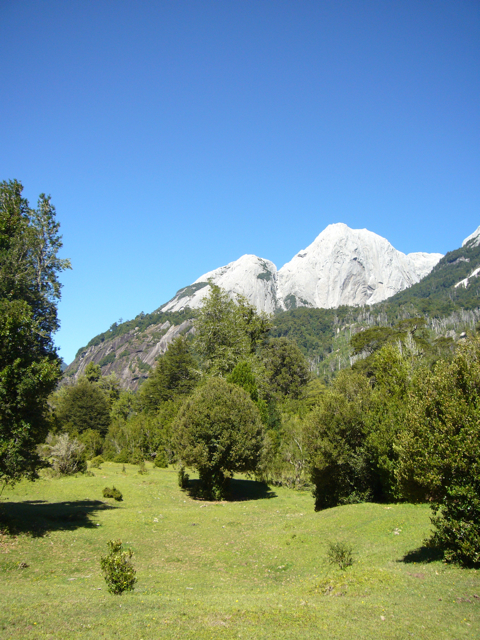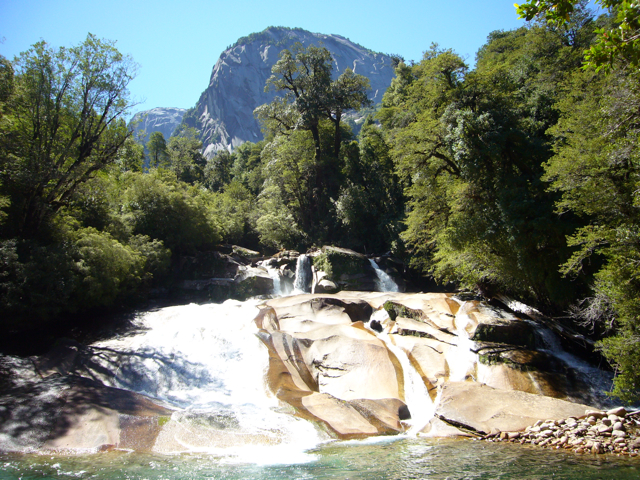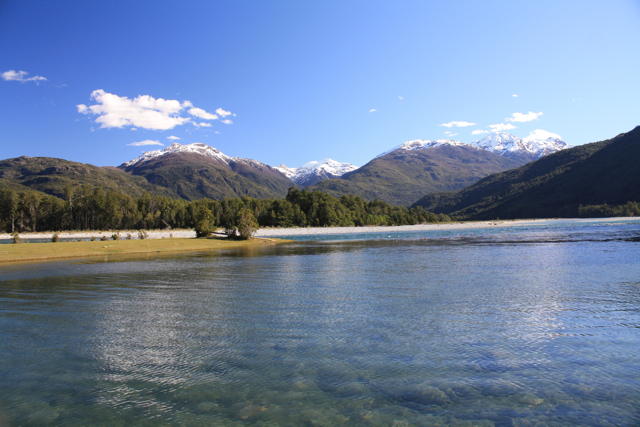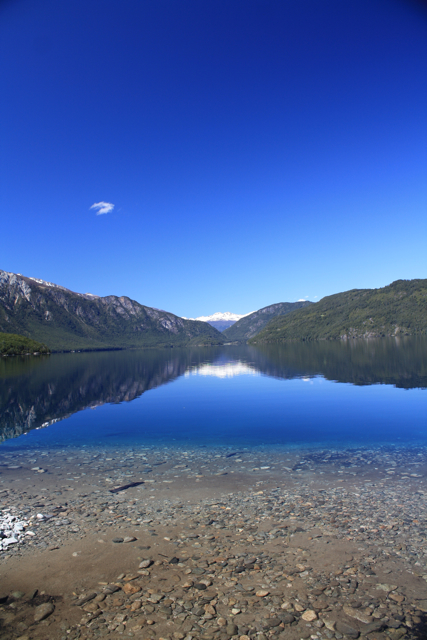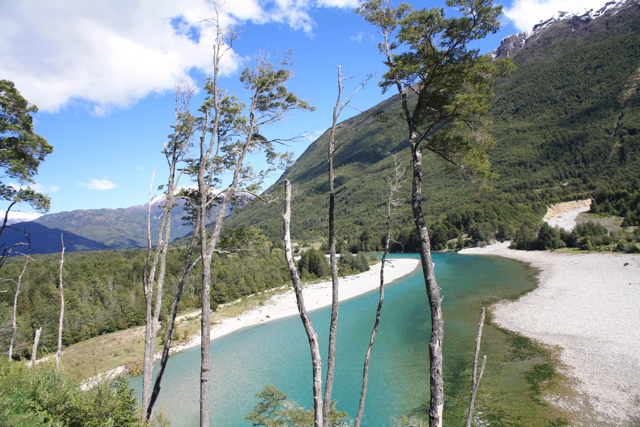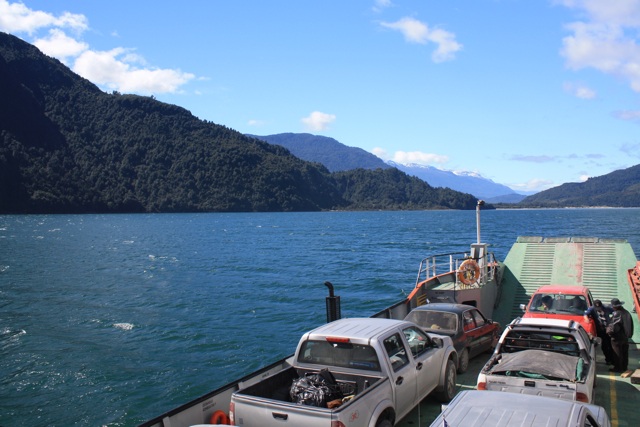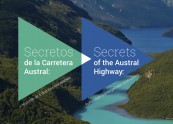By Marian Zink P.
Cochamó is a charming commune. Not only people that love nature marvel with this place, but also every person that visit it. It is impossible not to surrender to its turquoise waters or the deep blue of its rivers and lakes, to the snow peaks that surround it, or to its dense native forests. Besides, there are many different activities that can be practiced here.
Not so long ago this area was only an exclusive destination for elite tourists, but today a growing number of tourists arrive here to see the exuberant nature of this place. That is why, you will find luxurious lodges but also cheaper alternatives in accommodations, such as camping areas, that allows everybody to come and enjoy of a couple of days surrounded by the beauty and tranquility of Cochamó.
Starting from the town of Cochamó
In this commune of approximately 4000 inhabitants there are two main villages. We are speaking about Cochamó and Río Puelo. Small but charming, both have all basic services and are the starting point before starting to know the heart of this area.
From Cochamó it is mandatory to enter through the valley of the Cochamó River, an expedition that can last several days depending on what you want to do around the area. Ask in the town for experienced guides that can lead you through trails that can last up to 8 days, weather it is walking or on a horse, until you get to the border crossing El León.
Other attractions you should not miss are the areas of El Arco, where you can see millenary alerce trees, the area of La Junta and the Vidal Gormaz Lake.
It is very likely that, if you choose to practice trekking, you will end up with mud up to your waist, due to the dense vegetation and the large amount of rain that falls in this area during the year. Even so, it is an adventure worth trying and that we absolutely recommend. Furthermore, the effort will be rewarded by the beauty of the landscapes, by a spit-roast lamb or goat that your guide will cook for you and by the adrenaline of sliding down the natural waterslides of La Junta River.
When walking down the Cochamó River Valley one can watch the majestic mountains that attract rock climbers from all over the Globe, with its steep rock walls over 1000 meters high. If you are a mountain climbing enthusiast you won’t regret giving these mountains a try.
The Cochamó River is also a very good place to practice fishing.
The River Puelo Valley
Returning to the main route and continuing from the town of Cochamó towards Río Puelo, the administrative center of the commune, you can take the detour to Tagua Tagua Lake, where you can board a small ferry that crosses this lake.
Here starts the adventure of the Puelo River Valley. After an approximately 40 minutes drive you will reach the small town of Llanada Grande. If you continue down this road, you will find different accommodation options, from fishing lodges to camping areas.
A “must see” here is the area of Azul Lake. One option is to reach it on a mountain bike down a road of about 15 km. Once you’ve reached the lake, of really blue waters, one can cross on a boat and keep pedaling until you get to Las Rocas Lake. This can also be done on horseback or walking. You should ask around, since there are many farmers that complement their daily activities with tourism, offering a variety of services during the summer. They will also tell you a little bit about their history and what this land means to them.
If you continue down this road you will reach Primer and Segundo Corral, where currently the Ministry of Public Works is working on the connection Puelo – Paso El Bolsón, that will highly contribute to the connectivity of the area. Today, the only way of getting to this crossing point by land is either horseback riding or on foot.
Although it might be dangerous, you can also reach the crossing point through the Puelo River. You can even descend this river in a kayak, starting at its source in Argentina, finishing where the river flows into the Reloncaví Estuary.
But, without a doubt, the main attraction of the Puelo River Valley and the surrounding lakes, like Totoral, is fishing. You have different options to enjoy this sport, weather it is with local guides or in fishing lodges. You can be absolutely sure that, being in the right place and at the right time, you will catch more than a trout or salmon.
You can practice fishing all along the Puelo River, also in the areas closer to the town. This village is also a point of departure for different excursions, one of the most interesting being the trekking of almost three days that joins Puelo with Hornopirén.
The threat of hydroelectricity
This landscape could dramatically change if any of the different hydro-power projects that some big companies want to develop in the area materializes, something that troubles the locals and the people dedicated to touristic activities in Cochamó.
One of these projects is the hydroelectricity plant of Mediterráneo S.A. Company, that is under environmental evaluation since last year, and has received multiple observations.
The project consists of the construction of a hydroelectricity plant that will be located where the Torrentoso River flows into the Manso River, in the Puelo River Basin.
This project includes a high voltage transmission line of 63 km that would be located in a priority site for the conservation of the biodiversity of the Puelo River Basin and that could mean a heavy impact on the landscape, especially around the Tagua Tagua Lake.
Endesa company has also shown interest in using the rights it has over the waters of River Puelo since 1990, to materialize the hydroelectricity project “El Portón” that would leave communities and 6000 hectares of native woods and Alerce trees under water.
As always, it is not only the damages to nature that worry the community. Also, the fact that the electricity produced will directly go to the chilean Central Interconnected System, with no benefit to the inhabitants of the area that have to continue paying high prices for electricity, and even produce it themselves with generators or other means.
How to get there
- You can reach Cochamó from Puerto Varas, taking Route V69, driving through Ensenada and Ralún; or from Puerto Montt, taking Route 7 or Carretera Austral, then taking the ferry between La Arena and Puelche and then the road that joins Puelche (Hualaihué) with Cochamó. Both alternatives take approximately 3 hours by car and a little more by bus.
- Buses run every day from the Bus Terminal of Puerto Montt in direction to Cochamó and Río Puelo. We recommend to confirm the schedule by calling to the terminal phone number: + (56) 65 283000.
Crossing the Tagua Tagua Lake
Everyday the Caupolicán Ferry of Naviera Puelche crosses the Tagua Tagua Lake, at 9:00 and 13:00 from Puerto Canelo (the closest point to Río Puelo) and at 11:30 and 16:30 from Puerto Maldonado (closest point to Llanada Grande), increasing the frequencies if there is too much traffic. More information in www.navierapuelche.cl. From Puerto Maldonado there are buses to Llanada Grande.
Useful information
Tourist Office, Municipalidad de Cochamó: www.municochamo.cl /+(56) 65 350271



